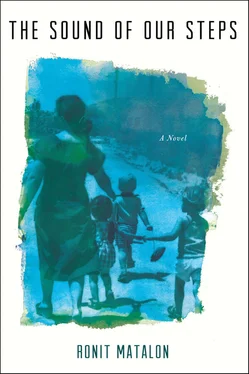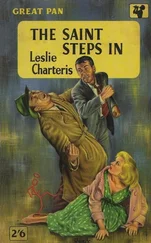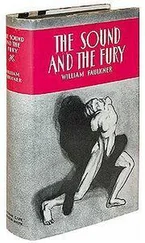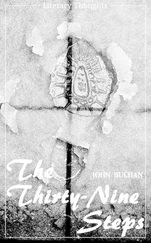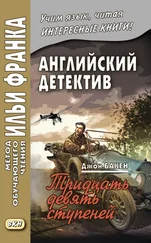The amm and amma in whose bed and between whom she lay with her head covered knew all this without knowing it. They shared the half-shack with Nona, wall to wall, they had one quarter and Nona one quarter, they kept cows and chickens in the yard, stirred a thick white paste on the outside coal stove with a long stick, prepared lafuf and mlawah on the coals and wore “those clothes people once wore,” said Sammy: the amma with her head wrapped in a black veil, a blue tattoo on her forehead, and a long embroidered tunic, the amm in rubber boots covered in mud and cow dung, with a thick salt-and-pepper beard and a white shirt belted with a girdle. They hardly ever spoke, not to other people and not to each other, seldom left the filthy, littered yard and the room that was like a closed seashell, opening a little to the outside world and immediately closing again, opening and closing: nine children they had lost in Yemen. The child crept into their room, into their bed, by day and by night, crawling through the air vent in the wall of Nona’s shower and crawling wordlessly into their bed, under the mountains of embroidered cloths, the rugs and the blankets, in the sour staleness that hung permanently in the air together with the vapors of the smoke, the things boiling inside the room and outside in the yard, on the burning coals. The amm gave her fresh milk from the cows in a tin cup to drink, and the amma kneaded the lafuf into balls with her kohl-stained fingers and set them in front of her in a row. Outside the world, side by side, crowded together, the three of them lay in the bed, under the heavy piles of bedclothes, on the sheet wet with the child’s urine, oblivious to the scandal kicked up by Nona and Sammy, fainting and yelling alternately, raising the roof.
They complemented each other, Nona and Sammy, in constructing a cathedral of imaginary calamities: she contributed the spirit, the inspiration, the directions and possibilities in general, while he translated the abstract ideas into concrete details, into technicalities, of “how exactly what could happen had in fact already happened.” Most of all they trembled at the thought of the mother, swallowing the drops of valerian generously supplied by the Nona: what would the mother say, the sound of her steps.
And say she did, and how she said: “It’s the two of you who frighten her with your fear, how will she come out of hiding with all the police and the brouhaha? You’ve frightened the child to death.”
Sammy shook his head in disbelief: “You don’t understand, she doesn’t understand a thing,” he spat to an invisible audience, rejecting in disgust the interpretation that in his opinion only showed up the fact of her cold-bloodedness, even though, an hour before, he had hung onto the policeman’s sleeve, threatening him and imploring him to find the child forthwith, on the grounds that he was too much of a coward to do it himself.
He was afraid of Corinne: his blood froze when she walked through the room, her silence flicking at her side like a whip. “I can’t talk to her,” he complained more than once, trying to please her and always failing: she was the sole and exclusive agent of her own satisfaction, if there was any satisfaction to be had. Her arrangements, her rituals, her aesthetic fastidiousness, her ready contempt, her aristocracy, which was partly natural and partly a pose, the sharpness of her tongue when she opened her mouth, and her profound disapproval of “the gang” and “the neighborhood”—all these made him quail.
One afternoon the child played with Corinne’s jewelry, all the dozens of pairs of earrings collected in the fancy carved wooden box. He came into the mother’s bedroom and stood rooted to the spot: she had simply opened the box, found the key somewhere, spilled the contents onto the bed, and clipped the earrings onto her ears and the neck of her dress, like medals. Sammy saw black and red. “What are you doing?” he yelled, shaking the child’s shoulders until her teeth rattled: “What are you doing? Do you want her to kill us?” The child widened her eyes and said nothing, while he went on shaking her violently to and fro until she fell back on the bed and lay there with her eyes open and empty. He stopped. All at once the convulsion that contorted his face and turned his eyes bloodred vanished, and a different convulsion of a different panic took its place. He leaned over the child: “What’s wrong with you?” He touched her shoulder lightly, “Talk.” He raised her to her feet. “Talk,” he pleaded, holding her cheeks and trying to force her jaws open: “Talk, talk,” and then, in a growing panic, shaking her shoulders violently again: “Talk, talk!” he yelled, charged out of the shack, and flew barefoot to Nona’s house: “She isn’t talking.”
For almost two hours he and Nona and the neighbors stood around her, crowded in the mother’s bedroom, trying seduction, coaxing, threats, and a moment or two of feigned indifference (“Don’t take any notice of her”). She stood rooted to the spot, a plank of wood. At some point he carried her on his back, frozen stiff, to Levy’s shop, and begged her in growing desperation to choose whatever she wanted. They sent for the doctor. He went to fetch him, dragging him almost by force from his reception hours in the clinic, from his waiting patients.
The doctor gave her one look: “The one who needs a sedative is you,” he said. Sammy lowered his blue work pants, his blue underpants that reached halfway down his thighs. “That shot he gave me was the size of the Flit cockroach spray, the needle was maybe a foot long,” he recounted with a shudder.
THERE WAS THAT look of hers in all the photographs: a sternness aspiring to a certain stateliness. She almost always posed in semi-profile, her eyes fixed on some point or other beyond the lens of the camera, her chin slightly raised, lips almost closed but not pursed, suggesting the shade of a shade of a smile, perhaps ironic, perhaps hypocritical. Everything about her stance in front of the camera proclaimed that she had collected herself in anticipation of what she assumed would be “the portrait,” fateful and definitive rather than a random picture. This one look that she kept for the camera was an antidote to what was liable to emerge, to her annoyance, from the photograph: herself as some nobody, just another woman who made no impact on the visual imagination of the viewer. As if she was saying to the camera: If that’s gone, if that door to feminine Eros is closed, then let’s go with sternness, an imposing, slightly intimidating woman.
Corinne called it “impressive.” Corinne loved saying “impressive,” with all the gravity of a considered judicial pronouncement, in a tone that she kept for the rare occasions of this pronouncement from on high: “She comes out impressive,” said Corinne. She herself was the most enthusiastic champion of the mother’s “impressiveness”: this show of strength and even of force, as a reaction to inner helplessness and demoralization, was in her opinion the most appropriate armor for meeting the world, that “We’ll show them” posture of hers.
The appearance of the impressive woman started to emerge in photographs at the end of her thirties and the beginning of her forties, the time of the great renunciation. It was preceded by two completely different eras. The first one, that of the photographs in Egypt, shows Nona’s “ basbusa ,” la jeune fille down to the last detail and convention: there is no limit to the gentleness and the trusting, not to say gullible, innocence shining from that oval face with its creamy-velvety complexion, those lips like buds on the point of blooming, in the Levantine version of Hollywood produced by the Cairo studio portraits. Especially the wedding photograph, retouched and colored, with Maurice: the limp delicacy with which her hands in their pure white gloves hold the bouquet of pure white lilies, until it seems about to slip from them and drop to the ground (she was then in the seventh month of her pregnancy), the evasive turning aside of the body of someone who doesn’t understand her role, who is not identified with it and is not playing it. She seems like the bridesmaid, not the bride.
Читать дальше
